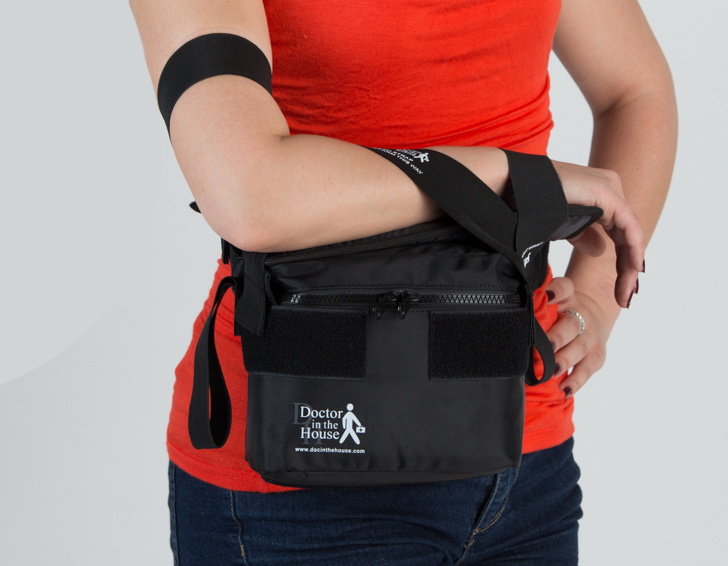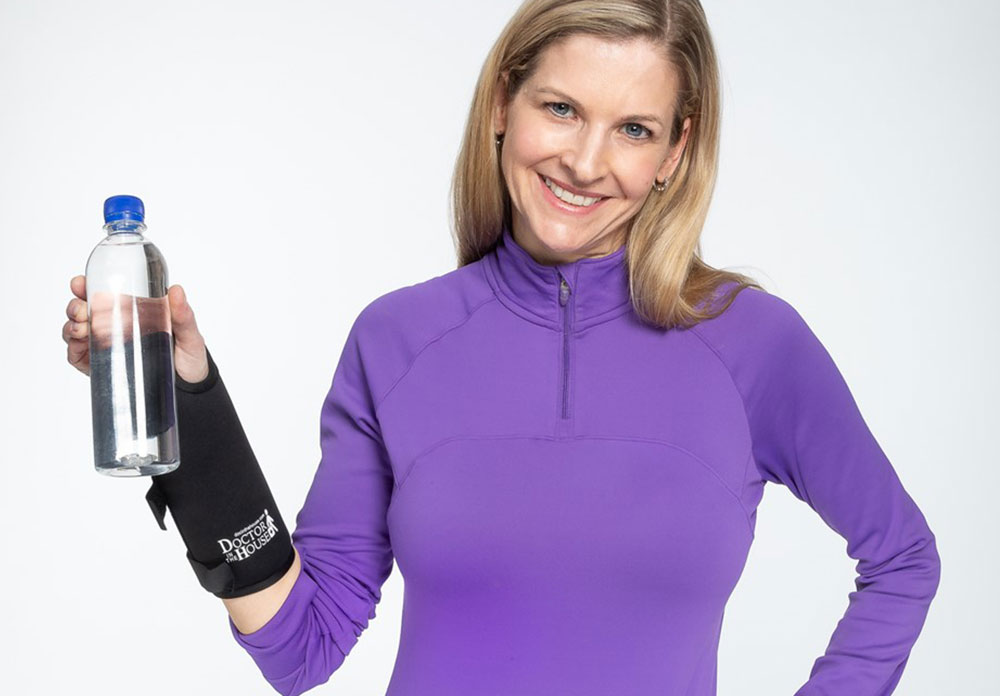Our Dynamic braces are a very different animal, very different from most braces which produce rigid immobilization. These allow movement but protected movement, to help calm down inflammation and enhance the benefits of life and activity modification as well as a good chiropractic treatment program and therapy. They allow protected motion which helps to heal that pain.
So, aside from a good dynamic step-down brace, what are the other therapies or treatments that might be available? Sometimes it is very simple. Heat or cold. Heat works by bringing more circulation to the area and helping to decrease the buildup of inflammation, while cold helps decrease buildup of the fluids by lessening blood flow to the area. There is no right or wrong; I generally recommend ice or cold for the first 24 to 48 hours of a new injury and then heat or cold whichever feels better after that.
Also, educate your patients. When you read the literature, we talk about therapy, stretches, core strengthening, and changing lifestyle. Many times, it’s the way we do things, how we live our lives. For example, if we lean forward with poor ergonomics or posture if we spend our days hunched over a keyboard or don’t stand with good posture. Exercise can cause problems if the form is not ideal, sitting all day at a desk has many long-term ill effects. Carrying extra weight on our bodies can also increase stress on the back. All these things can put chronic stress on the back and ultimately lead to back problems.
Can a bad mattress do it? Yes, but more often it is what works best for you. Some people like softer, others harder, it becomes a matter of personal preference and often trial and error. Many times, mattresses, sleeping positions, side sleepers vs. back sleepers and stomach sleepers who hyperextend their back can be the issue. And there are up and downsides to pillows. All of these variables can soothe or aggravate back and neck pain over the course of time. Essentially, when you become aware and make small changes, one comes to realize that all of these factors in how we live our lives influence our backs, necks, discs and our vertebral alignment either making us happy or miserable.
Tiger Balm, Biofreeze and Icy Hot type gels impart a sensation of heat or cold to the area often give excellent relief. Moist heat packs also offer great relief. Hot showers, hot baths, jacuzzis, whirlpools, and massages all help decrease inflammation and muscle spasms as well. Many times, if it is not aggressive, therapy is helpful.
Therapy for deep heat, ultrasound, high-volt galvanic stimulation, and TENS units can be used at home as well. Stim units that calm down the inflammation and irritation can often be helpful. Manipulation be it Osteopathic or Chiropractic, if herniations and other problems have been ruled out, is often helpful as well.
Sometimes yoga, Tai Chi, exercises, and therapies will help you stand up or sit up straight, and good desk setups allow proper arm and hand support. Everyone is different, some people are miserable standing and need to sit, while others are aggravated by sitting and need to stand more. That’s why there are standing desks, where you can work at your desk standing if your back bothers you when you sit. Perhaps you stand on one foot and not the other and this throws off your alignment. I have personally arranged my desk so that I alternate sitting and standing according to the task and my needs which alternate throughout the day.
So, this is the basis for a good general back care program: regular exercise, gentle that feels good, keeping your weight at the best level you can, and meditating or finding ways to decrease your stress since stress causes inflammation in the body and muscle spasms. Eat mindfully and in a healthful way because when you eat healthfully your weight and your energy level are better. Eat an antioxidant-rich diet, that allows you healthy proteins and carbohydrates and a small portion of healthy unsaturated fats from fresh foods and vegetables or fruits. This allows inflammation to calm down in your body and decreases the oxidation process, the internal rust. The Mediterranean Diet is a good example. Medical Meditation, relaxation, biofeedback, and medical self-hypnosis techniques, all help to relax muscle strain and tension. Many times, we hold our tension in different areas whether it be our upper back, our neck, or our lower back, and physically our tensions, our stresses, are taken out on the body.
And, learning to breathe, deep breathing, and just relaxing, even for a moment or two will allow irritation to calm and muscles to relax. Your neck muscles, shoulders, and your lower body relax. Just by changing the way you breathe.








